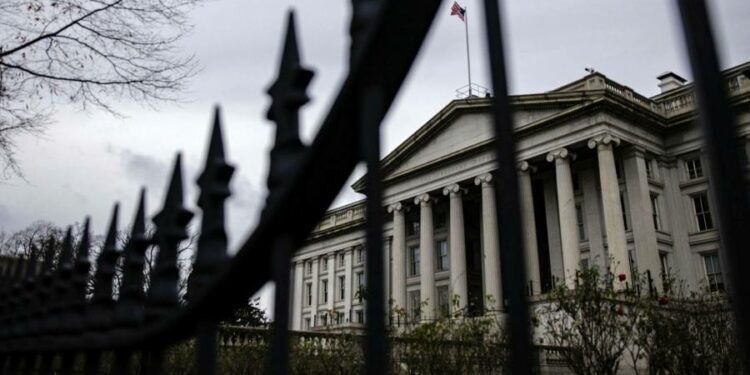European technology shares fell, and futures markets signalled Wall Street tech stocks would sustain further losses following a punishing start to the year, as bets of US interest rate rises put pressure on highly valued equities.
The technology sub-index of Europe’s Stoxx 600 share gauge dropped 2 per cent, with the broader index down 0.8 per cent.
Futures contracts that wager on the direction of Wall Street’s Nasdaq 100 dropped 1.1 per cent, continuing a slide for the tech-focused share index, which lost 4.5 per cent last week. Contracts tracking the blue-chip S&P 500 index fell 0.6 per cent.
The US central bank is eyeing a cycle of rate rises this year, as economic reopening and stimulus spending have pushed inflation to multi-decade highs and helped the labour market recover from the shocks of coronavirus.
The change of mood has hit shares in tech businesses, which benefited from lockdowns as other industries struggled and were further boosted by low rates that helped investors justify the high and rising valuations of a small group of large companies that prospered during the pandemic.
“As you get more return on cash, or bonds, you are less willing to take the risk on volatile, expensive technology stocks,” said Trevor Greetham, head of multi-asset at Royal London Asset Management.
The Nasdaq 100 is trading on a price-to-earnings ratio of 32.3 times trailing profits, compared to 17 times for the FTSE All World share index.
Economists polled by Reuters expect data on Wednesday to show US consumer prices rose at an annual pace of 7 per cent last month, up from 6.8 per cent in November.
US unemployment dropped to an unexpectedly low 3.9 per cent in December, the labour department’s non-farm payrolls report showed last week. This came days after minutes from the Fed’s latest meeting showed the central bank’s officials had discussed raising rates “sooner or at a faster pace” than previously anticipated.
Strategists at Goldman Sachs expect the Fed to raise rates four times this year, after tethering them close to zero in March 2020, in a move that pulled down businesses’ funding costs and boosted global stocks.
“We continue to see hikes in March, June, and September, and have now added a hike in December for a total of four in 2022,” Goldman’s Jan Hatzius said in a note to clients.
“Declining labour market slack has made Fed officials more sensitive to upside inflation risks and less sensitive to downside growth risks.”
The yield on the 10-year Treasury note rose by as much as 0.04 percentage points to 1.808 per cent, its highest since January 2020, as the price of the debt fell to reflect anticipated increases in interest rates that make fixed-income securities less appealing.
This key debt yield, which underpins companies’ borrowing costs worldwide, then settled flat on the day at 1.773 per cent. It has climbed from about 1.53 per cent at the start of the year as traders also assessed the economic threat from the Omicron coronavirus variant as having faded.
The dollar index, which measures the US currency against six others, rose 0.3 per cent.
Additional reporting by William Langley in Hong Kong











